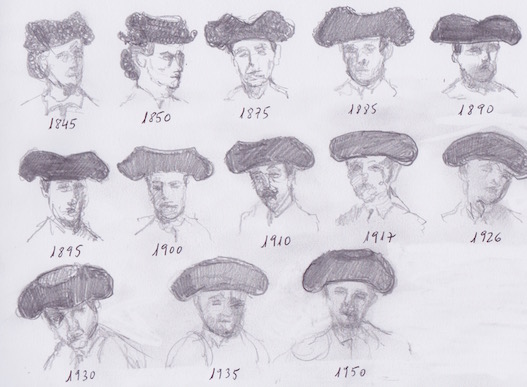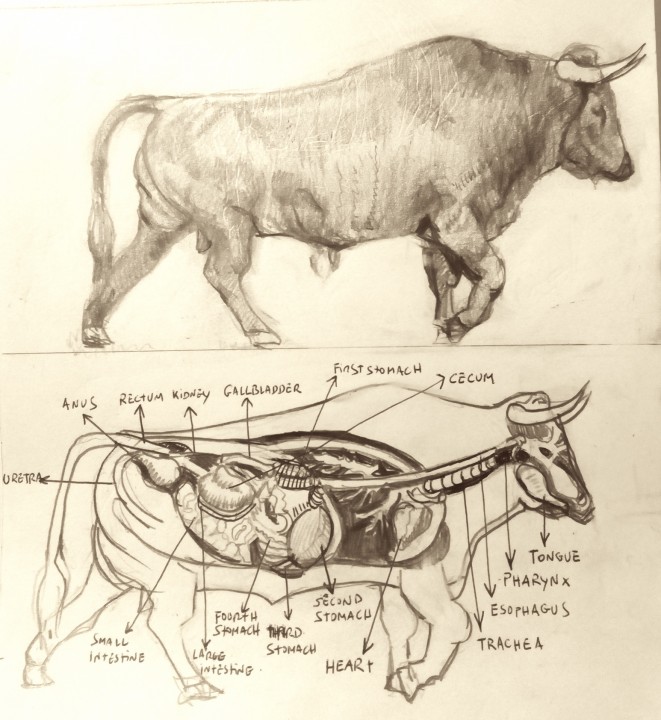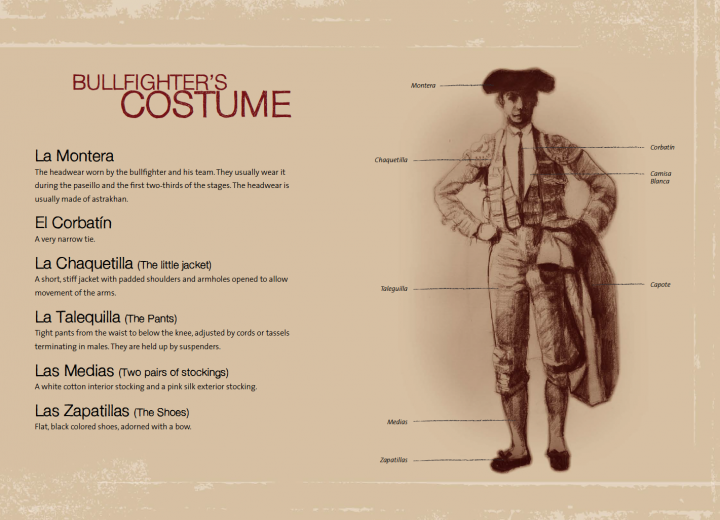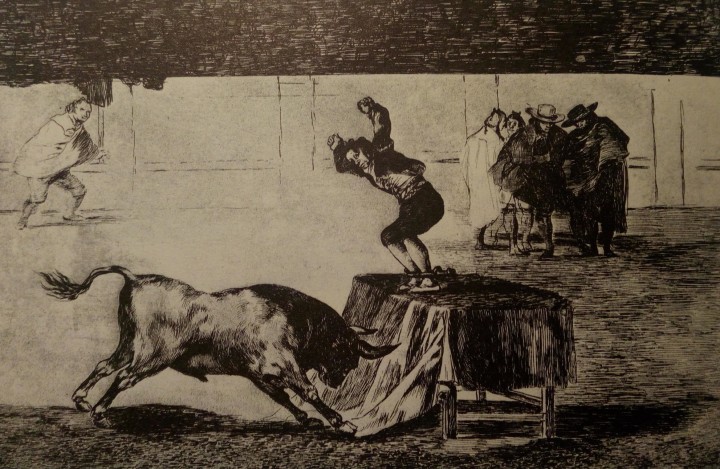 “Another Of His Follies In The Same Bull Ring” (“Otra locura suya en la misma plaza”)this is the title of this splendid engraving by Goya. It represents a chilling episode . Martincho, famous bullfighter, standing on a table with feet tied seems to be ready to jump over the bull. Martincho was a brave , sometimes reckless, bullfighter capable of the greatest audacies. Goya printed this work in 1815 . Especially interesting is the group of people in the background
“Another Of His Follies In The Same Bull Ring” (“Otra locura suya en la misma plaza”)this is the title of this splendid engraving by Goya. It represents a chilling episode . Martincho, famous bullfighter, standing on a table with feet tied seems to be ready to jump over the bull. Martincho was a brave , sometimes reckless, bullfighter capable of the greatest audacies. Goya printed this work in 1815 . Especially interesting is the group of people in the background
Francisco Ebassún Martinez or Francisco Antonio Bassón martines, better known as MARTINCHO (1708-1772) was a bullfighter from Aragón . He was specialized in facing the bulls with shackles on his feet. He got the stanting of Matador de Toros in Madrid in 1750 . When Francisco de Goya was 18 years old , he saw Martincho fighting . Long after his engravings represented the feats of Martincho.
Banderillas Al Cuarteo
The main objective of the Stage of “Banderillas” is to revive the bull
without reducing its strength in order to prepare it for the next stage: The
Stage of Muleta (Suerte de Muleta).
Three bullfighters’ assistants or sometimes the bullfighter him or herself
jab the bull’s back with three pairs of “Banderillas”. The bull feels a
sharp pain when the “Banderillas” have pierced its back.
The Suerte del Cuarteo is one of the oldest way to jab the bull with the banderillas. The bullfighter faces the bull and moves describing a semicircle getting the bull to move towards him. The bullfighter Pepe-Hillo, main carácter of many Goya’s engravings, described the Banderillas al Cuarteo:
“El diestro se colocará a una distancia proporcionada, ya se halle el toro parado, ya venga levantado, y llamándole partirá de sesgo para encontrarse con el toro, el cual tomará necesariamente el mismo giro en busca del torero. Luego que éste se haya reunido con aquél en el centro de la suerte, se quedará para meterle las banderillas en el cerviguillo en el mismo acto que baje la cabeza para dar la embestida”
However this is not the only way to jab the bull. Sometimes the bullfighter does not move and wait the charge of the bull. Examples of this technique are the “Topacarnero” and the “Quiebro”.
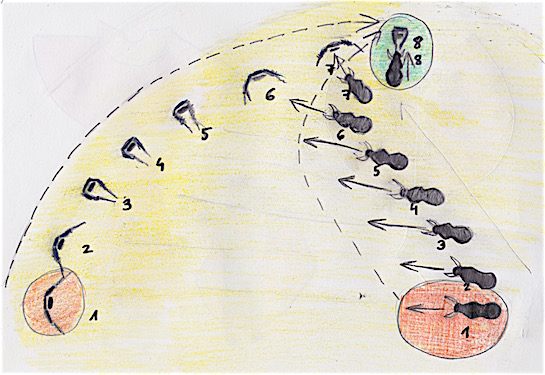
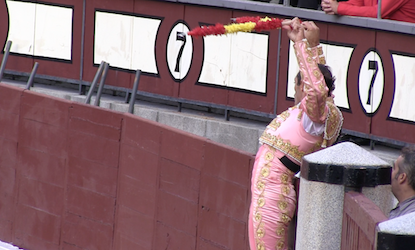
History of the Montera
FUENTE YMBRO IN MADRID
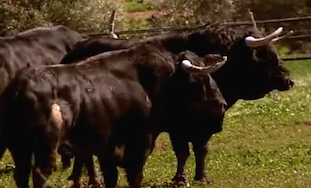 The Fuente Ymbro’s bulls live and grow in Lo Romeral, a big meadow located in the province of Cadiz , between the cities of San Jose del Valle and Alger, very close to the Natural Park Los Alcorocales. These bulls are very well fed and live in freedom like any other wild animal.
The Fuente Ymbro’s bulls live and grow in Lo Romeral, a big meadow located in the province of Cadiz , between the cities of San Jose del Valle and Alger, very close to the Natural Park Los Alcorocales. These bulls are very well fed and live in freedom like any other wild animal.
The owner of these prestigious fighting bulls is Ricardo Gallardo.
Fuente Ymbro’s bulls , usually black and Brown, serious and with big face, are very demanded by the most famous bullfighters.
We are going to have the opportunity to see in action these bulls in Madrid on March 26th 2017.
LEO VALADEZ
On March 26th 2017 Leo Valadez, Diego Carretero and Pablo Aguado will fight in Madrid against bulls from Fuente Ymbro. The public of Madrid is looking forward to seeing Leo Valadez, one of the most interesting Mexican bullfighters today
Leo Valadez was born in 1997 in Aguascalientes, Mexico. He studied at the Aguascalientes School and at the Fundación El Juli, in Arganda. Leo was the first student to get a scholarship from CITAR ( Centro Internacional de Tauromaquia y Alto rendimiento). He fighted for the first time on June 9th 2013 with Francisco Jose Espada and Cristian Climent against bulls from Antonio Lopez Gibaja.
Technically he handles very well l the Muleta with the left hand, uses aristically the cape and , sometimes , plays the roll of a Banderillero.
Leo Valadez has in the great Mexican bullfighters his great references. “I learn watching his videos, especially David Silveti and Manolo Martinez, are my two favorite bullfighters. It’s time for Mexico to have a new great bullfighter and I will fight to be him. “. He dreamed with fighting at the most importat european bull-rings, but he never forgets Mexico: “I am proud to be Mexican and having success at home will make me very happy.”
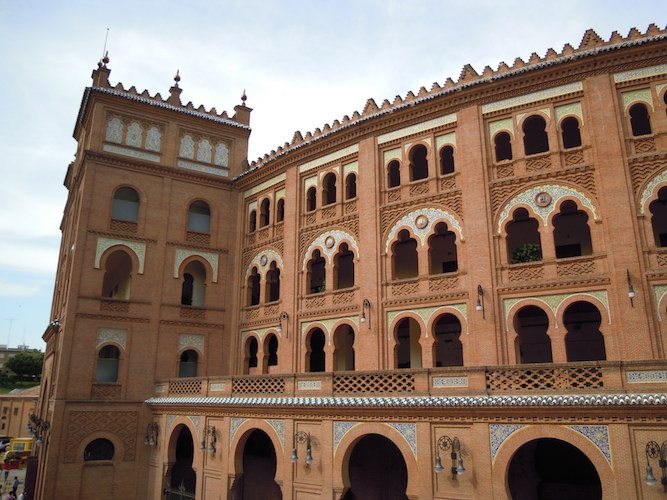
The Capote
The members of the matador’s team and the matador face the bull with the CAPOTE at the begining of the bullfight
In the first two stages of the bullfight, the cape is used to “situar en suerte”, in
other words, to take the bull to an ideal spot to be jabbed by the Picador and to be
stabbed in the neck with the “Banderillas”. But the bullfighter also uses the cape
artistically. There is a wide range of ways of using the cape.
The Capote is a piece of cloth 113 or 123 cm long and weighing 4 or 6 kg.
In the early days of bullfighting the knights went out on horse back and their assistants on foot dressed in cape and they used them in their fight with the bull. Over the years this Capa was replaced by the Capote, which was red and made of wool. Currently it is pink ahead and yellow, green, blue or purple behind, according to the preference of the bullfighter. Nowadays the Capote is made of synthetic material (nylon) or silk to prevent the horn from engaging the cloth and it is treated with chemicals to keep it from penetrating the animal’s blood and to give it weight and stiffness.
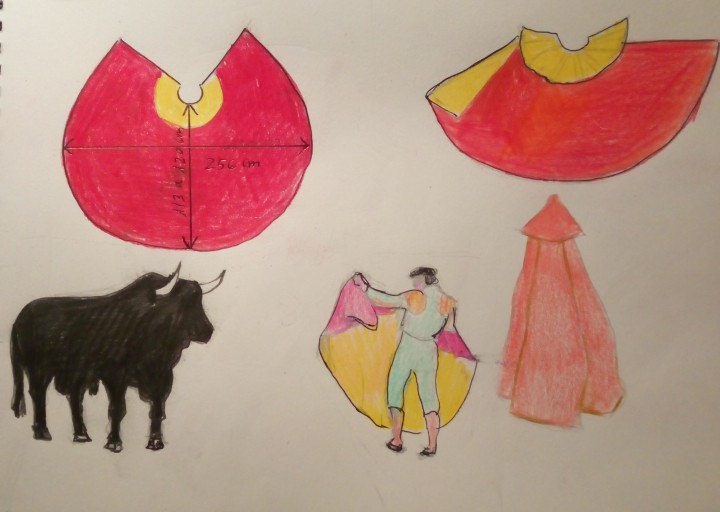
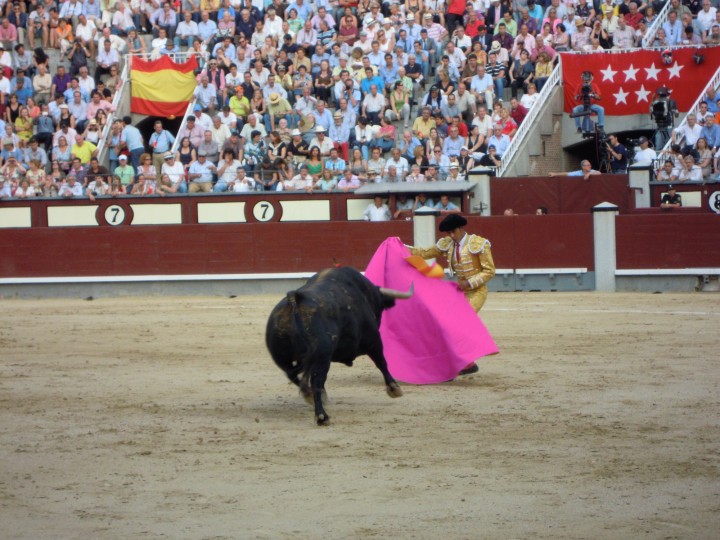
IVAN FANDIÑO
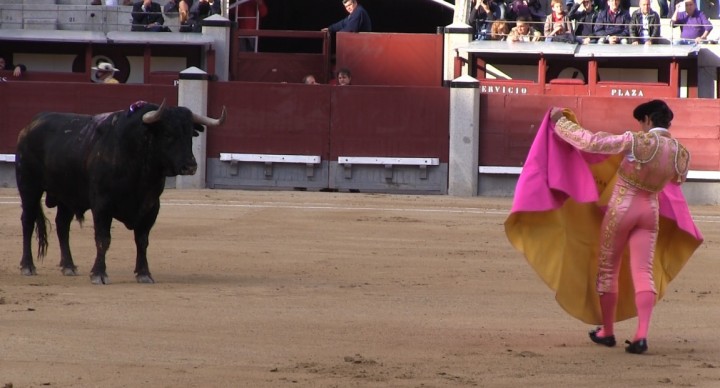 On April 9th 2017 six bulls from Victorino Martin will be fight by Ivan Fandiño, Alberto Aguilar and Gomez del Pilar in Madrid.
On April 9th 2017 six bulls from Victorino Martin will be fight by Ivan Fandiño, Alberto Aguilar and Gomez del Pilar in Madrid.
Iván Fandiño Barros , born in Orduña in 1980, obtained the standing of Matador de Toros on August 2005. Since 2013 belongs to the elite of bullfighters. In 2011 he fought in Madrid four times. In 2013 Fandiño was awarded by The Spanish National Radio as the most outstanging bullfighter of the year, He was seriously injured by a bull from Parlade in Madrid in the same year. His team is composed by three banderilleros: Victor Manuel Martinez, Roberto Martin Jarocho and Diego Ramón Jimenez; ThreePicadores: Victor Manuel Martinez, Rafael Agudo and Juan Melgar. His Manager ( Apoderado) is Nestor García. His oficial web-site is http://www.ivanfandino.net. Upcoming bullfights in which he will participate:
On February 25th 2017 : Festival with Picadores in Ciudad Rodrigo (Salamanca) fighting bulls from Juan Manuel Criado and Encinagrande with El Cid, Juan Del Alamo and Toñete
On April 1st 2017: Corrida de Toros in Guadalajara fighting bulls from Jose Luis Pereda- La Dehesilla with Paquirri and Miguel Angel Perera.
THE “MONTERA”
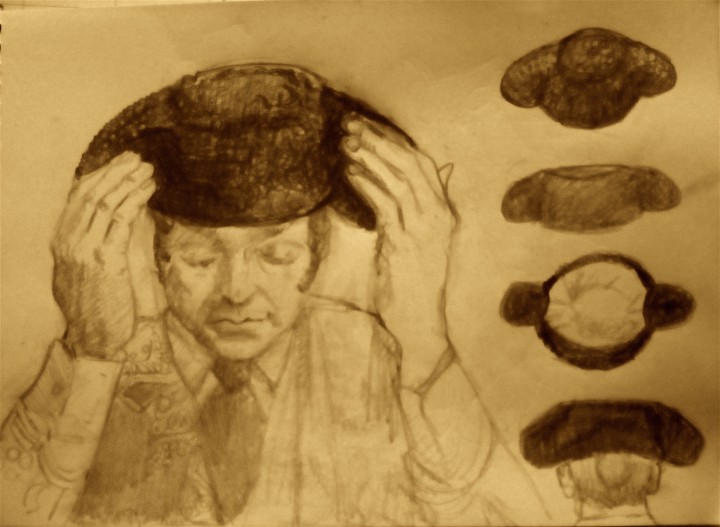 The Montera is the element with which the bullfighters cover their heads during the first two thirds of the bullfight. Just before taking the cape and starting the fight, the bullfighter gives the Montera to the person to whom he wants to offer the bull’s death. If he offers it to the public he will throw the Montera to the arena, usually backwards, and if there is no offering he will be picked up by one of his assistants.
The Montera is the element with which the bullfighters cover their heads during the first two thirds of the bullfight. Just before taking the cape and starting the fight, the bullfighter gives the Montera to the person to whom he wants to offer the bull’s death. If he offers it to the public he will throw the Montera to the arena, usually backwards, and if there is no offering he will be picked up by one of his assistants.
The Montera was introduced by Francisco Montes (Paquiro) around 1835.
An interesting theory about the origin of the Montera is that it had a double essential function: Firstly, to emphasize the feminine aspects of the bullfighter in the first part of his fight. Therefore the Montera would be a sort of wig to highlight the femininity and delicacy of the human fighter. And secondly, it was a kind of disguise by which the bullfighter identifies himself with the bull. Nowadays the Monteras are usually made of astrakhan, but they were formerly made of black lambskin. At the time of the opening of the gate, the bullfighters seem to be an emerging human cattle and, when they walk in the arena during the opening procession ( El Paseillo) they look like a herd.

